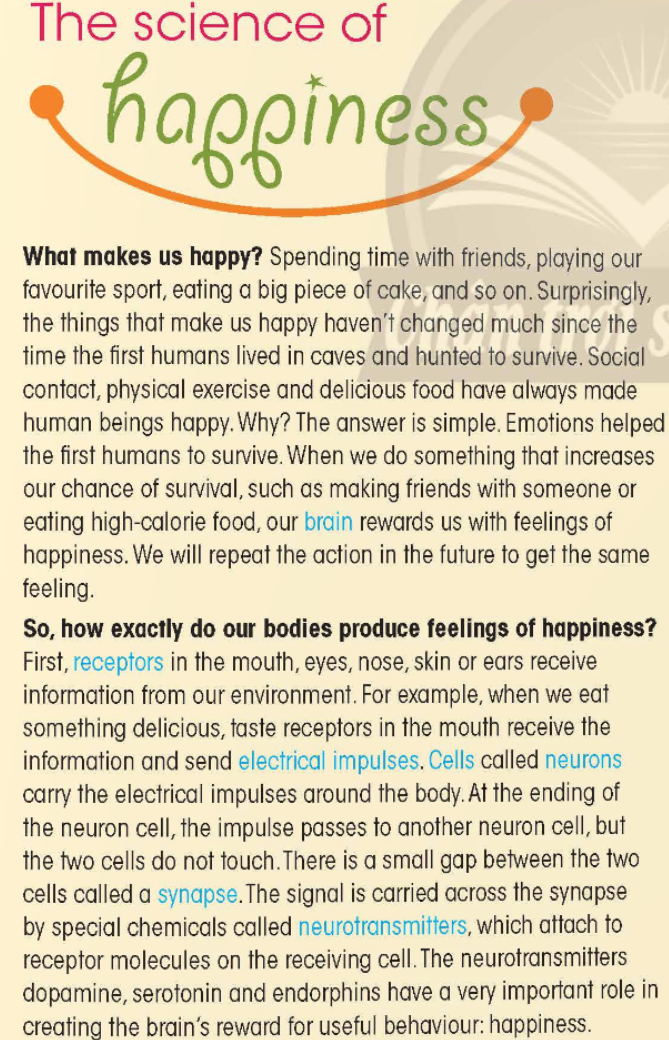Read and listen to the article. What is the name for the chemicals that help to create our emotions?
The science of happiness
What makes us happy? Spending time with friends, playing our favourite sport, eating a big piece of cake, so on. Surprisingly, the things that make us happy haven’t changed much since the time the first humans lived in caves and hunted to survive. Social contact, physical exercise and delicious food have always made human beings happy. Why? The answer is simple. Emotions helped the first humans to survive. When we do something that increases our chance of survival, such as making friends with someone or eating high-calorie food, our brain rewards us with feelings of happiness. We will repeat the action in the future to get the same feeling.
So, how exactly do our bodies produce feelings of happiness?
First, receptors in the mouth, eyes, nose, skin or ears receive information from our environment. For example, when we eat something delicious, taste receptors in the mouth receive the information and send electrical impulses. Cells called neurons carry the electrical impulses around the body. At the ending of the neuron cell, the impulse passes to another neuron cell, but the two cells do not touch. There is a small gap between the two cells called a synapse. The signal is carried across the synapse by special chemicals called neurotransmitters, which attach to receptor molecules on the receiving cell. The neurotransmitters dopamine, serotonin and endorphins have a very important role in creating the brain’s reward for useful behaviour: happiness.
